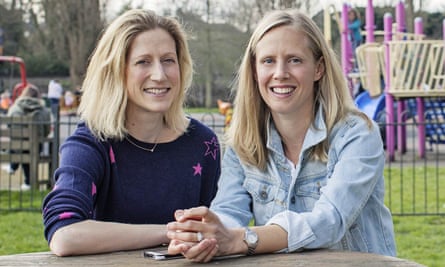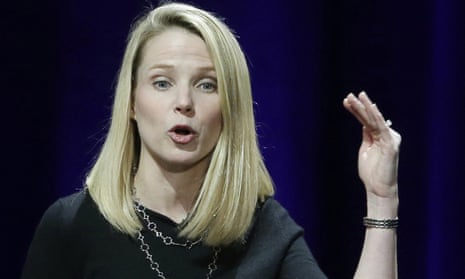When someone uses the phrase “women in technology”, what does it mean to you? Perhaps you picture a high-profile, senior technology figure like Sheryl Sandberg or Marissa Mayer. Despite myriad campaigns aiming to increase diversity in the sector, our view of what being a woman in technology means remains surprisingly narrow.
Recent research from PwC revealed that only 3% of female students would consider a career in technology as their first choice. The most common explanation? Many felt they didn’t have enough information about what a career in tech could involve. Others felt that the tech sector simply wasn’t creative enough.
If we really want to close the gender gap, we need to show the next generation just how diverse, creative and exciting this sector can be.
A career in technology isn’t always about working for a tech giant

Director and YouTuber Hazel Hayes started out on this traditional route, working in-house for Google-owned YouTube, but found her niche when she broke away and built her own profile on the platform.
Hayes acknowledges that there is a lack of understanding about the nature of her industry and the dedication and skill involved in building a successful career online.
“Often these are quite shrewd business people. I know it might seem like they’re making fluffy or unimportant content, but they’re very aware of who they’re making that content for and the kinds of things that people will enjoy.”
“So whatever people may think about [the video], an awful lot of work has gone into it behind the scenes. Even as something as seemingly simple as a straight to camera vlog will have actually have taken a lot of time, hard work and dedication.”
She uploads regular videos and handles every aspect, from scripting, the editing process, grading, music and graphics, as well as uploads and promotion. “All in all it can actually be a few days of process for every single video.”
For Hayes, using and promoting her skills in this way is paying off. She’s pitching three scripts at the upcoming Tribeca Film Festival and will shortly be directing an eight-part series for Fullscreen.
“None of this would have been possible if I hadn’t spent years learning to write, direct and produce content on YouTube and if I hadn’t built such a loyal and supportive audience in doing so.”
Jobs in technology can be creative

Think technology and creativity can’t go hand-in-hand? A huge number of business owners and entrepreneurs are using their expertise to build the backbone of their business and save costly outsourcing.
Lisa Forde, owner of The Card Gallery, an online invitations and stationery supplier, has built her business from scratch and continues to handle coding for the website and all digital marketing in-house.
“Our initial site was basic but functional,” Forde says. “I would do everything, from writing the content, adding images, fixing bits of bad code and printing orders, to packing them and arranging the courier. My career background gave me a good foundation on the database management side of things, which has helped enormously when researching and implementing shopping cart systems and plug-ins.”
“Suppliers are often surprised by how much input the team and I want when dealing with the technical and digital side, but I feel it’s our business to be involved,” she explains. “Outsourcing can encourage business owners to let go too much, which can be a costly mistake.”
Forde’s business is a prime example of a creative enterprise that relies heavily on the technology that drives it. “The Card Gallery has changed massively in terms of its use and reliance on technology over the past 13 years,” Forde explains.
You don’t need a tech background to run a successful startup

Katie Massie-Taylor and Sarah Hesz, co-founders of Mush, first met in a playground when their babies were newborns. ‘It occurred to us that in a world so well serviced with technology connecting people, it was madness there wasn’t one for mums to find other likeminded mums nearby,’ she explains.
Massie-Taylor’s background was advertising, while Hesz was a City broker. “Neither of us had any clue how to create an app,” she admits.
Convinced that there was a market for their idea, they invited a friend to join the team as a tech adviser before they took their pitch to investors. While this helped with credibility, Massie-Taylor believes it was the idea itself that won over their investors.
“The tech was very basic for our product,” she explains. “The fact it was an easily understood premise and product helped, as did the market size of new mums around the world and the global opportunity it represented.”
Massie-Taylor believes that the parent tech market is a buoyant one, and that a lack of tech qualifications hasn’t held them back. Her advice to would-be entrepreneurs? “Having enablers, like our adviser, who allow you to build an product without committing to an incubator-style set up would certainly be of benefit.”

Imogen Wethered, co-founder of customer management platform Qudini, agrees. With a history of art degree and training in advertising and communications, she wasn’t the obvious candidate for starting a tech company, but attending a Hackathon in 2012 changed that. She and her co-founder won the Hackathon with their idea, then applied to Telefonica’s accelerator Wayra and won a place and investment.
“I only went to the Hackathon because I had basic knowledge of Photoshop so could try mocking up user interface designs,” says Wethered. “In the last five years I have learned so much about tech and business and I really believe the best way to learn is through having to do things on the job and being thrown in at the deep end.”
Being a woman in technology isn’t about limiting yourself, conforming to a narrow ideal or saying goodbye to creativity. It is quite the opposite – and we owe it to the next generation of talent to celebrate the diversity of the technology sector and everything it offers.
Looking for a job? Browse Guardian Jobs or sign up to Guardian Careers for the latest job vacancies and career advice

Comments (…)
Sign in or create your Guardian account to join the discussion